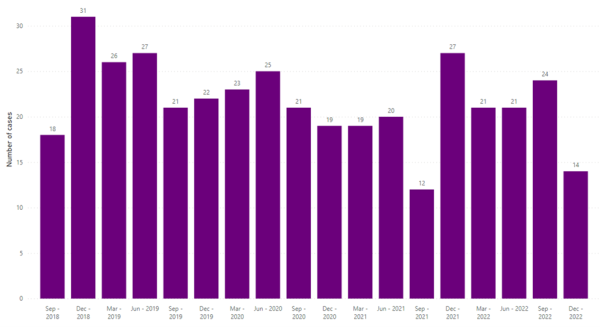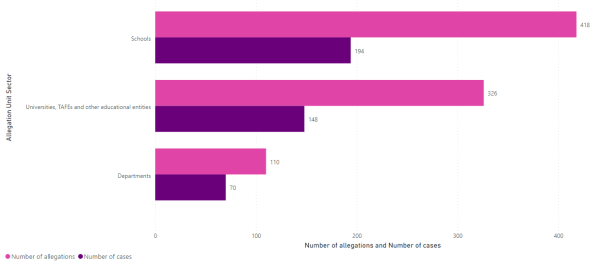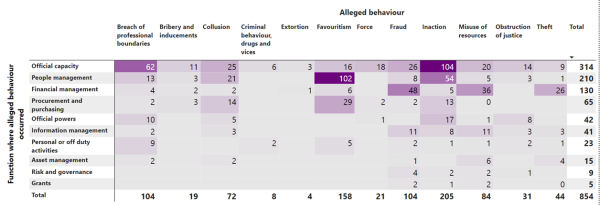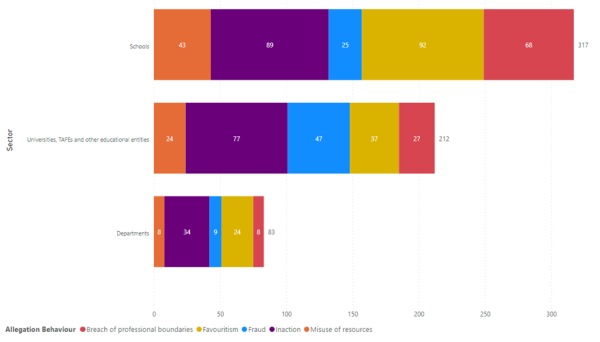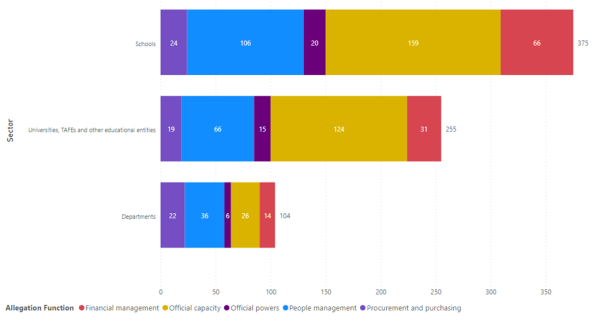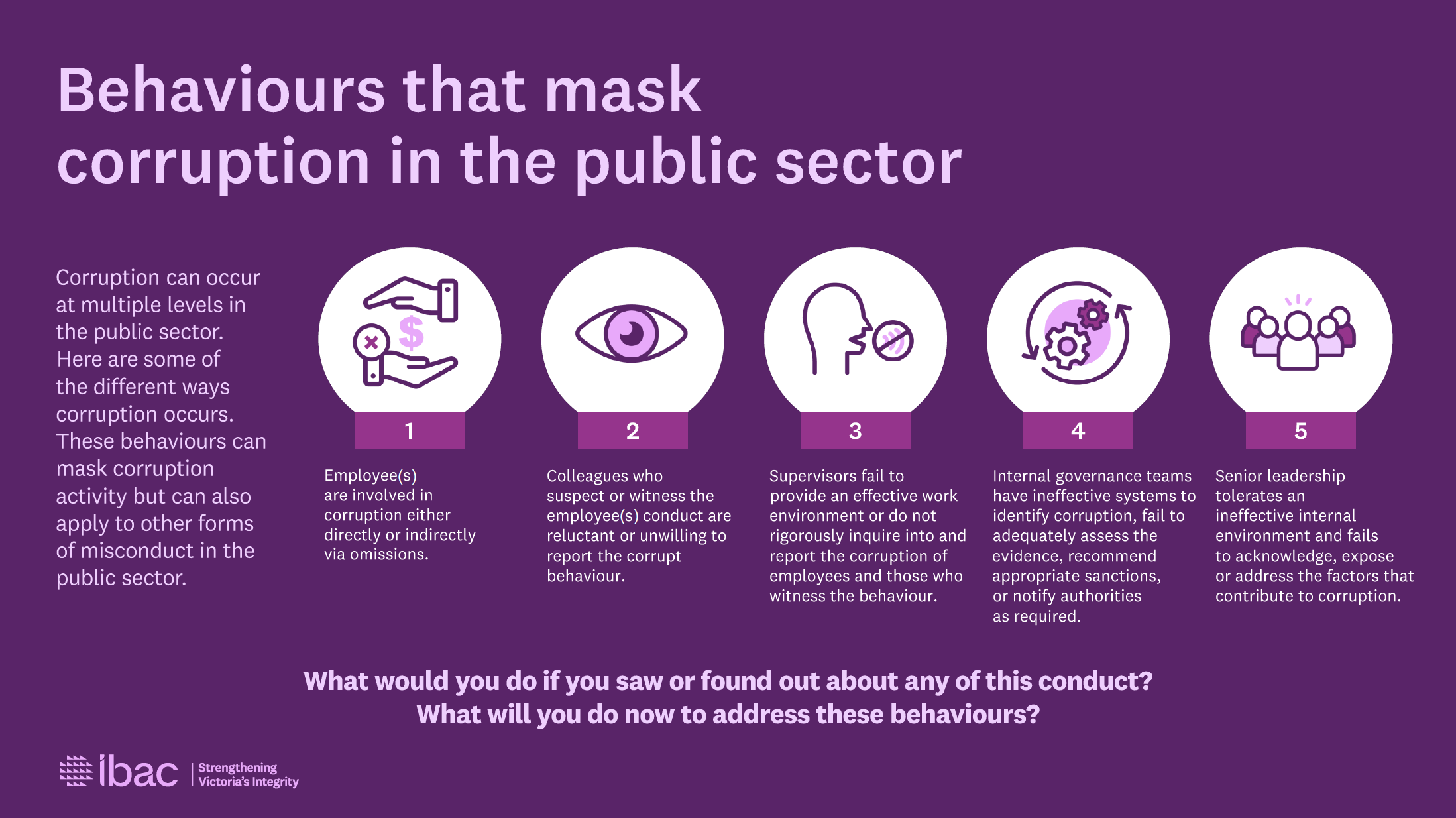Key corruption risks
Schools
- Financial management, including the misuse of school funds, fraudulent invoices to receive funds and misuse of payroll, leave and allowances.
- Teachers’ interactions with students and parents, as well as other staff. IBAC receives many allegations about teachers’ poor conduct although they may not meet the threshold of corruption.
- Recruitment and promotion, as well as complaints management.
Universities, TAFEs and other educational entities
- People management, including recruitment and promotion. This also includes the application processes for students.
- Interactions between staff and students, including staff acting inappropriately towards students and for their own benefit.
- Information management, including unsecure networks open to exploitation or attacks.
Departments and statutory authorities
- Procurement and purchasing, particularly ongoing contract management and selection processes.
- Complaints management.
Construction and capital works for educational facilities
- Contract management (and contractual oversight) of services delivered.
- Procurement and regulation.
- Major infrastructure projects, encompassing the aforementioned risks, particularly procurement fraud.
Key drivers of corruption risk
Schools
- Limited awareness about corruption, prevention and reporting strategies.
- Lack of adherence to the frameworks for the management of conflict of interest in recruitment and procurement.
- Inadequate leadership culture that leads to overall development, or perception, of a discriminatory, bullying or non-transparent culture in a school.
Universities, TAFEs and other educational entities
- Uncoordinated and inconsistent processes across divisions that make it difficult to detect anomalies.
- A lack of active management of employees allows for misconduct to continue unchecked.
- Inadequate or inexperienced board and governance structures within registered training organisations and universities, including attracting board members with appropriate experience and capability.
Departments
- Perceptions within sections of the portfolio on the ability to investigate and communicate the outcomes of investigations into corruption and misconduct, leading to a reduction in the willingness of employees to report.
- The sector’s large size, and the wide variety of entities within it, creates challenges for identifying agency-specific risks and both formulating and monitoring tailored integrity initiatives .
Key prevention and detection strategies
Pleasingly, IBAC’s 2022 Perceptions of Corruption Survey of the Public Sector found that 37% of public sector employees who responded believe their organisation performs very well when it comes to ensuring strong policies, procedures and controls are in place. 40% considered it to be adequate.
The following strategies are for consideration of all public bodies in the education sector:
- Strong integrity frameworks that identify perceived, potential or actual conflicts of interest, as well as how they should be managed.
- Proactive measures, such as mandatory and regular training and awareness raising to ensure staff – including private sector employees – are aware of and understand integrity-related policies and procedures.
- Robust recruitment policies and procedures to ensure integrity from shortlisting, panel selection and vetting, through to induction.
- Regular and random audits to ensure compliance with policies and procedures in risk areas such as procurement, recruitment and information security).
- Building a positive ‘speak up’ culture built on an integrity framework, and a leadership culture that leads by example.


